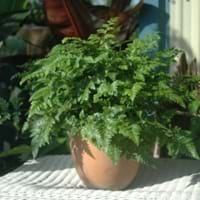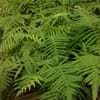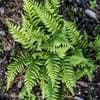Life Span
Perennial
Annual
Origin
Europe
South America, Southern Africa, India, Australia, New Zealand
Types
Bigleaf hydrangea, Hortensia, Smooth hydrangea, Oakleaf hydrangea, Annabelle
Not Available
Number of Varieties
Not Available
Habitat
Forest edges, Hillside, Woods
Bog Garden, Boggy areas, Swamps
USDA Hardiness Zone
6-8
8-11
Sunset Zone
Not Available
H1, H2, 14, 15, 16, 17, 19, 20, 21, 22, 23, 24
Habit
Rosette/Stemless
Upright/Erect
Flower Color
Blue, Dark Purple, Light Purple, Red, White
Non Flowering Plant
Flower Color Modifier
Bicolor
Bicolor
Fruit Color
Not Available
Non Fruiting Plant
Leaf Color in Spring
Yellow green
Dark Green
Leaf Color in Summer
Yellow green
Dark Green
Leaf Color in Fall
Yellow green
Dark Green
Leaf Color in Winter
Light Green
Dark Green
Leaf Shape
Oblovate
Odd Pinnate
Plant Season
Spring, Summer, Fall
Spring, Summer, Fall, Winter
Sunlight
Partial shade, Full Shade
Full Shade, Partial shade
Growth Rate
Medium
Medium
Type of Soil
Loam, Sand
Clay, Loam
The pH of Soil
Neutral, Alkaline
Acidic, Neutral
Soil Drainage
Well drained
Well drained
Bloom Time
Spring, Summer
Fall, Spring, Summer
Tolerances
Drought
Not Available
Where to Plant?
Container, Ground
Ground
How to Plant?
Seedlings, Stem Planting
By dividing rhizomes, tubers
Plant Maintenance
Medium
Medium
Watering Requirements
Not Available
Requires regular watering
In Summer
Average Water
Lots of watering
In Spring
Moderate
Moderate
In Winter
Average Water
Average Water
Soil pH
Neutral, Alkaline
Acidic, Neutral
Soil Type
Loam, Sand
Clay, Loam
Soil Drainage Capacity
Well drained
Well drained
Sun Exposure
Partial shade, Full Shade
Full Shade, Partial shade
Pruning
Remove damaged leaves, Remove dead branches, Remove dead leaves
Prune for size control
Fertilizers
All-Purpose Liquid Fertilizer
All-Purpose Liquid Fertilizer, Does not require fertilizer once established
Pests and Diseases
Red blotch
Pests and diseases free, Red blotch
Plant Tolerance
Drought
Shade areas, Variety of soil types
Flower Petal Number
Single
Single
Foliage Texture
Bold
Medium
Foliage Sheen
Glossy
Glossy
Evergreen
Semi-Evergreen
No
Attracts
Bees, Flies
Aphids, Deers, Scale Insects
Allergy
Chest tightness, Diarrhea, Dizziness, Nausea, Vomiting
Not Available
Aesthetic Uses
Not Available
Borders, Formal Garden, Ground Cover
Beauty Benefits
Not Available
Not Available
Edible Uses
Not Available
No
Environmental Uses
Air purification
Air purification
Medicinal Uses
Fever, Kidney problems, Urinary tract problems
Not Available
Part of Plant Used
Flowers, Root
Whole plant
Other Uses
Not Available
useful as a ground cover
Used As Indoor Plant
Not Available
No
Used As Outdoor Plant
Yes
Yes
Garden Design
Foundation, Mixed Border
Container, Cutflower, Foundation, Groundcover, Houseplant, Mixed Border, Tropical
Botanical Name
ASPLENIUM scolopendrium
RUMOHRA adiantiformis
Common Name
Hart's Tongue Fern
leatherleaf fern
leathery shieldfern
iron fern
7-weeks-fern
climbing shield fern
In Hindi
Hydrangea
leatherleaf
In German
Hortensie
Leatherleaf
In French
Hortensia
Leatherleaf
In Spanish
Hortensia
leatherleaf
In Greek
υδραγεία
Leatherleaf
In Portuguese
Hortênsia
leatherleaf
In Polish
Hortensja
Leatherleaf
In Latin
Hibiscus
Leatherleaf
Phylum
Not Available
Tracheophyta
Class
Not Available
Polypodiopsida
Order
Not Available
Polypodiales
Family
Aspleniaceae
Dryopteridaceae
Genus
Not Available
Rumohra
Clade
Not Available
Not Available
Tribe
Not Available
Not Available
Subfamily
Not Available
Not Available
Number of Species
Not Available
Not Available
Properties of Hart's Tongue Fern and Leatherleaf
Wondering what are the properties of Hart's Tongue Fern and Leatherleaf? We provide you with everything About Hart's Tongue Fern and Leatherleaf. Hart's Tongue Fern doesn't have thorns and Leatherleaf doesn't have thorns. Also Hart's Tongue Fern does not have fragrant flowers. Hart's Tongue Fern has allergic reactions like Chest tightness, Diarrhea, Dizziness, Nausea and Vomiting and Leatherleaf has allergic reactions like Chest tightness, Diarrhea, Dizziness, Nausea and Vomiting. Compare all the properties and characteristics of these two plants. Find out which of these plant can be used as indoor plant. If you are interested to decorate your house and garden, find out aesthetic uses, compare them and select the plant which will beautify your surrounding. Along with beautification, try comparing medicinal and edible uses of Hart's Tongue Fern and Leatherleaf and you can choose the plant having best and most benefits.
Season and Care of Hart's Tongue Fern and Leatherleaf
Season and care of Hart's Tongue Fern and Leatherleaf is important to know. While considering everything about Hart's Tongue Fern and Leatherleaf Care, growing season is an essential factor. Hart's Tongue Fern season is Spring, Summer and Fall and Leatherleaf season is Spring, Summer and Fall. The type of soil for Hart's Tongue Fern is Loam, Sand and for Leatherleaf is Clay, Loam while the PH of soil for Hart's Tongue Fern is Neutral, Alkaline and for Leatherleaf is Acidic, Neutral.
Hart's Tongue Fern and Leatherleaf Physical Information
Hart's Tongue Fern and Leatherleaf physical information is very important for comparison. Hart's Tongue Fern height is 6.56 cm and width 10.50 cm whereas Leatherleaf height is 45.70 cm and width 60.00 cm. The color specification of Hart's Tongue Fern and Leatherleaf are as follows:
Hart's Tongue Fern flower color: Blue, Dark Purple, Light Purple, Red and White
Hart's Tongue Fern leaf color: Yellow green
Leatherleaf flower color: Non Flowering Plant
- Leatherleaf leaf color: Dark Green
Care of Hart's Tongue Fern and Leatherleaf
Care of Hart's Tongue Fern and Leatherleaf include pruning, fertilizers, watering etc. Hart's Tongue Fern pruning is done Remove damaged leaves, Remove dead branches and Remove dead leaves and Leatherleaf pruning is done Prune for size control. In summer Hart's Tongue Fern needs Average Water and in winter, it needs Average Water. Whereas, in summer Leatherleaf needs Lots of watering and in winter, it needs Average Water.



